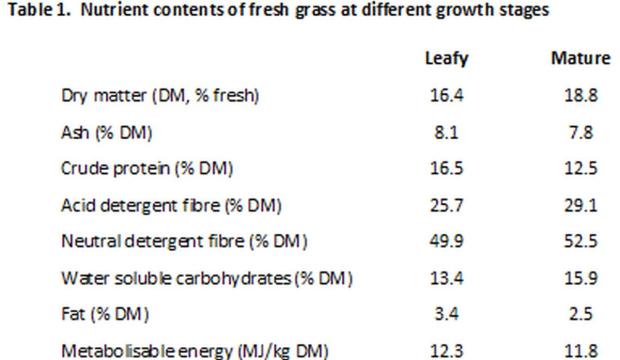AFBI research provides new information on feeding value of grass
Date published:
Fresh grass is the cheapest source of animal feed for ruminants. For this reason, pasture-based dairy production has dominated certain areas of the world such as Ireland, parts of the UK and New Zealand. These countries take full advantage of high grass yields and a long grazing season.

Fresh grass in livestock production
In Northern Ireland, grass-based production systems have traditionally provided a competitive edge to local milk production by enabling production at lower cost compared to systems involving year round housing. Grazing systems also provide a better image of dairy production to consumers and a number of European milk processing companies are now introducing a mandatory requirement for grazing during the summer period.
Energy content of grass
The feeding value of fresh grass is extremely important as it affects both production and profitability. The energy content of fresh grass is normally assessed by it’s metabolizable energy or ME content. However, the methods used to estimate grass ME content in analytical laboratories have been developed using data derived mainly from conserved forage. The increasing interest in grazing systems, coupled with increases in the ME content of grass in new grass varieties, highlights the need for up-to-date techniques to predict grass ME content and to incorporate this new information when designing rations for grazing cows.
AFBI Hillsborough ruminant nutrition studies
Recent research in AFBI Hillsborough has investigated the factors that influence the ME content of fresh grass. Experiments were run during the grazing season over 3 consecutive years, using cows fed solely fresh cut grass.
Facilities in AFBI Hillsborough (feed digestibility units and calorimetric chambers) allow for robust measurements of dry matter intake, faeces and urine outputs and methane emissions. These data can be used to accurately evaluate how efficiently cows utilise nutrients and energy contained in feeds.

All grass from the 3-year study were tested by NIRS, and this has enabled relationships between grass composition and measured ME content to be investigated. Feeding grass with more protein and less fibre provides cows with more ME, mainly by improving the digestion of organic matter in grass. These new relationships have now been incorporated into the Hillsborough Feeding Information System. The outcome of this work will provide farmers with a more rapid and accurate analytical service for assessment of ME contents in fresh grass. This is an important development for the dairy industry as there is now a much more accurate and reliable system to predict the true feeding value of fresh grass.
Acknowledgements
The study was supported by the Department of Agriculture, Food and the Marine of the Republic of Ireland and the Department of Agriculture and Rural Development of Northern Ireland. The authors would like to gratefully acknowledge help from colleagues in AFBI Hillsborough for the collection of experimental data.
by Sokratis Stergiadis and Tianhai Yan, Agri-Food and Biosciences Institute, Hillsborough
Notes to editors:
AFBI carries out high quality technology research and development, statutory, analytical, and diagnostic testing functions for DARD and other Government departments, public bodies and commercial companies. AFBI's Vision is “Scientific excellence in Northern Ireland … serving the world”.All media enquiries to AFBI Press Office.